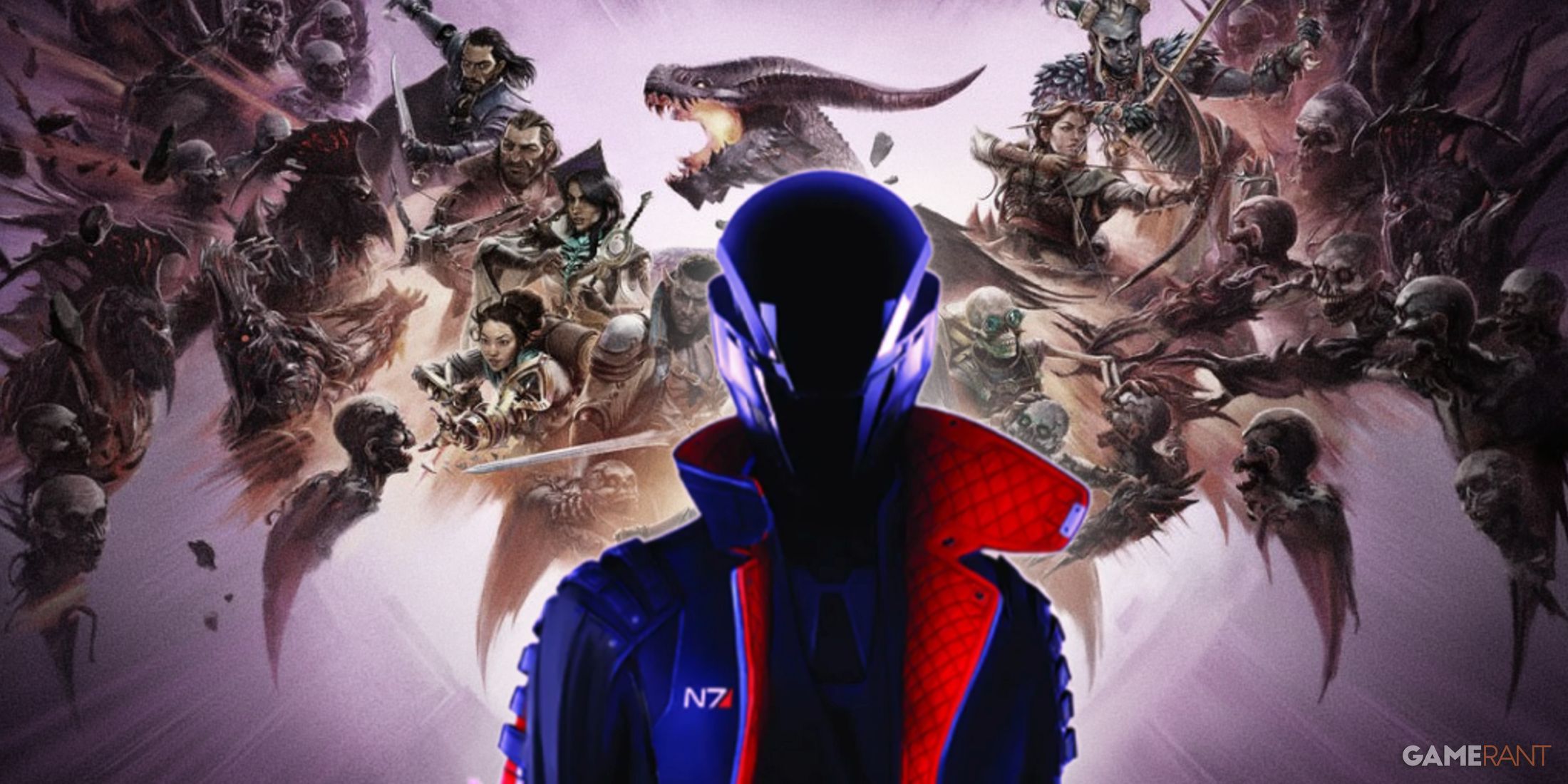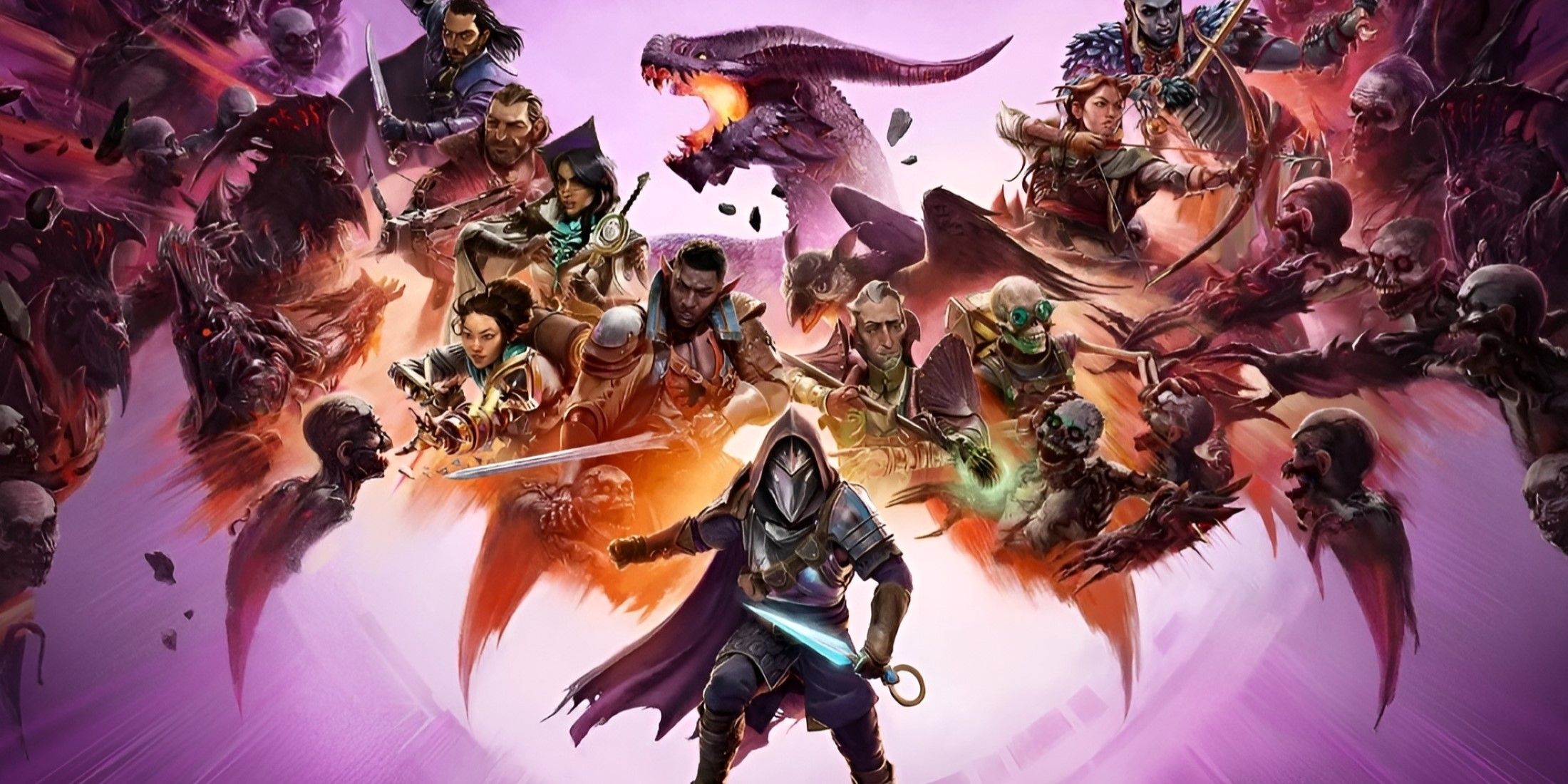When Dragon Age: The Veilguard launched to glowing critical reviews, BioWare received a whiplash of mixed reactions from long-time Dragon Age fans. While reviewers praised Dragon Age: The Veilguard for its narrative clarity, streamlined combat, and cast, longtime fans were split. BioWare’s latest installment in the Dragon Age series launched a new experience that pleased some fans and demonstrated a great point of entry for new Dragon Age players. On the other hand, the long-awaited title marred other long-time players’ views and hopes for the franchise. Some welcomed the changes, while others mourned the loss of something much harder to define: the messy, soulful magic that used to live in Dragon Age’s grittier edges.
A nine-year development cycle could not protect Dragon Age: The Veilguard from being the protagonist of many controversies. Now that Dragon Age: The Veilguard has likely received its final update with no narrative DLC plans in sight, BioWare has officially shifted its attention toward the next Mass Effect game. This string of events has left many players concerned about the franchise’s future. Yet, in the face of uncertainty, it may be worth looking back at the title that placed the Rooks on the chessboard. The examination of older Dragon Age titles isn’t simply a story of nostalgia but rather a reflection of how Dragon Age’s identity has evolved. This change in identity means that Dragon Age players can reflect on how far it has come while acknowledging that evolution may have led to leaving a few things behind along the way.

How Dragon Age: The Veilguard May Foreshadow Mass Effect 4’s Plans
Looking back on Dragon Age: The Veilguard and its lack of post-launch content could help set expectations for BioWare’s next game, Mass Effect 4.
The Veilguard Marks a Major Tonal Shift for the Dragon Age Series
With every installment, BioWare has reinvented Dragon Age. Origins introduced a gritty, tactical RPG steeped in dark fantasy and choice-driven consequences. Inquisition built on that foundation with a sprawling open world and the kind of political intrigue that demanded a corkboard, red string, and a sprawling war table that introduced tactical gameplay that wasn’t always immediately tangible to the player.
The Veilguard, by contrast, is slicker, and more compact at times. Its pacing is more digestible, and its tone is closer to a heroic fantasy romp than a brooding epic. Tonally, something within the fandom has shifted, too, as The Veilguard has spurred a whole culture war against it despite the series’ thematic cohesiveness.
The Evolution of Squadmates in Dragon Age
One of the defining features of Dragon Age has always been its messy approach to party dynamics. In Origins, DA2, and Inquisition, the road to unity was anything but smooth. Companions disagreed, judged each other harshly, and clashed with the player over political and moral choices. This grit gave relationships weight; it made every earned friendship, rivalry, or romance feel more grounded in the story’s stakes. Additionally, it made the best Dragon Age characters feel believable and realistic.
Bonds Forged in Fire, Not Flickers: The Differences in Squadmate Bonding
In the earlier titles, character arcs didn’t just unfold beside each other; they often unfolded against each other. Morrigan and Alistair’s banter bordered on hostile, Fenris and Anders outright loathed one another, and Vivienne’s sharp words could cut through any party dynamic like glass. These ideological and personal divides mirrored the political tension of Thedas itself, rooting squad drama in the world’s larger conflicts. The party didn’t come pre-bonded, and that could be a source of stress for players in the early hours of their playthroughs.
By contrast, The Veilguard’s companions are surprisingly cohesive from the jump. Everyone is quick to join the cause and even quicker to warm up to one another. It’s a refreshing change in tone for some and undeniably wholesome. But for fans who loved the series’ historically complicated bonds, it can feel like skipping the hard part of real connection. Disagreements are brief, soft-edged, and often smoothed over by light banter or rapid mutual understanding. While this lends the game a breezier rhythm, it can diminish the sense of stakes, especially when facing world-ending threats like the Dreadwolf’s wrath. Without tension, it’s harder to believe in the growth of relationships. If everyone’s already on the same page, companion-drama lacks, and the player, who is poised as squad leader, could miss out on the emotional rewards of building bridges.
Gender, Romance, and Representation in Dragon Age
Since the very first Mass Effect, BioWare has never wavered in including storylines that are considered controversial. From the moment that a female Shepard could romance the female-presenting Asari Liara, players know where BioWare stands in regard to representation of all kinds of consensual love and identity. They continued this tradition with Dragon Age. The Veilguard shines in its inclusivity and representation, especially when it comes to gender expression and romance. Earlier entries flirted with queer relationships—Fenris, Zevran, Isabella, Anders, Dorian, Josephine—but always with some level of gatekeeping. Queer characters often had to be pursued by a player of a specific gender or race, and often their queerness was woven into a tragic backstory or presented as a personal conflict to overcome.
In The Veilguard, things feel more lived-in. Characters across the gender spectrum exist naturally within the world, and romance isn’t gatekept by rigid binary constraints. The Veilguard introduces gender nonconformity in an unapologetic and non-hand-holding way, allowing players of all identities to see themselves reflected in the story. While some longtime fans may miss the political friction that once shaped the party’s social dynamics, others may see this shift as the natural evolution of a series that has always aspired to mirror the real world in all its diversity.

Dragon Age Creator Says BioWare’s Two Major Teams Didn’t Get Along
A former lead writer at BioWare explains how the teams behind the studio’s two major franchises worked largely separately and did not get along.
Style, Substance, and Stylization: The Visual Evolution of Dragon Age
The Dragon Age franchise has never been known for revolutionary graphics, but it has cultivated a distinct and compelling visual identity over time. Origins and Dragon Age 2 both leaned into a grounded medieval grit, shaped as much by technical limitations as by tonal intent. The muted color palettes, angular armor sets, and shadowed interiors reflected the series’ darker themes: religious corruption, civil war, mages on the run. While not universally praised for their looks, these games established a strong baseline for the world of Thedas—a place where beauty was often brutal.
It was Inquisition that marked the true aesthetic renaissance for Dragon Age. Embracing high fantasy with an art nouveau flair, Inquisition wove striking visual motifs throughout its menus, codex art, and companion tarot cards. Every companion had a stylized, evolving card that tracked their moral arc, subtle narrative breadcrumbs told in gorgeous linework and symbolism. Inquisition’s embrace of decorative surrealism helped define the franchise visually, even as its world remained morally murky. Then comes The Veilguard, looking like it has walked out of an entirely different franchise.
Dragon Age: The Veilguard is Stylized, but Divisive
The Veilguard is undeniably beautiful. Its characters are expressive, its color palette is vibrant, and its environments are brimming with painterly texture — but for some fans, it feels almost too stylized. Early concept art revealed alternative plans for key characters and left a bitter taste in some players’ mouths. The game traded the franchise’s moody visual soul for a brighter, bolder, almost cartoonish veneer.
It’s a shift that reflects modern design trends and a new engine’s capabilities, but one that also presents a potential fracture to the franchise’s visual throughline. Where Inquisition felt like it grew out of Origins and DA2, The Veilguard sometimes looks like it’s cosplaying as itself. This isn’t inherently a bad thing; art evolves, and the cosplay is impressive. This is still Thedas, but through a different lens. Not every fan is sure it’s one they want to peer through.
Will Dragon Age Continue Evolving in the Future?
Gatekeeping what Dragon Age should be will result in counterproductive arguments about Dragon Age’s potential for growth and exploration. In a franchise that seemed to rediscover itself in every new title, it would have been unfair to expect The Veilguard not to bring its own magic to the series. The Veilguard is proof that BioWare still knows how to make a deeply emotional, character-first RPG. It just reflects different priorities: accessibility, visual appeal, and clear stakes in storytelling. For many new fans, that’s more than enough. Still, it’s worth asking what the series might lose if it leans too hard into polish at the expense of friction.
There still stands the question concerning whether the franchise has a future. As previously mentioned, BioWare has moved its attention toward Mass Effect 4, and unfortunately, this piggybacks some underperforming metrics. EA reported that Dragon Age: The Veilguard fell short of financial and player-base expectations, alongside the news that some of its developers had been the victims of layoffs. Shortly after, The Veilguard director Corinne Busche left the studio to pursue an opportunity with Wizards of the Coast. And even if Dragon Age fans moved past the disappointing news of the game’s development and performance, the looming reality of the game’s mixed reception in the fandom still murks what could have been a victorious revisit to the series.
BioWare has never shied away from making controversial, emotionally charged games. Dragon Age has long been its experimental sandbox: a series where mechanics, narrative focus, and tone shift with each new installment became the modus operandi. As proven by The Veilguard, that spirit of reinvention is alive and well in Dragon Age, even if the direction feels unfamiliar to some longtime fans. But perhaps the differences aren’t as vast as they seem. Despite its stylistic departure, The Veilguard shares the same narrative backbone that runs through Origins, DA2, and Inquisition: a world teetering on the edge of collapse, mages and templars in ideological conflict, and a cast of companions who evolve from strangers to something like family. The presentation may be sleeker, the characters may be less conflicting, and the systems more refined, but the thematic heart of Dragon Age still beats at the center.

Dragon Age: The Veilguard
- Released
-
October 31, 2024
- ESRB
-
M For Mature 17+ // Blood, Nudity, Sexual Themes, Strong Language, Violence
- Publisher(s)
-
Electronic Arts
- Engine
-
Frostbite

